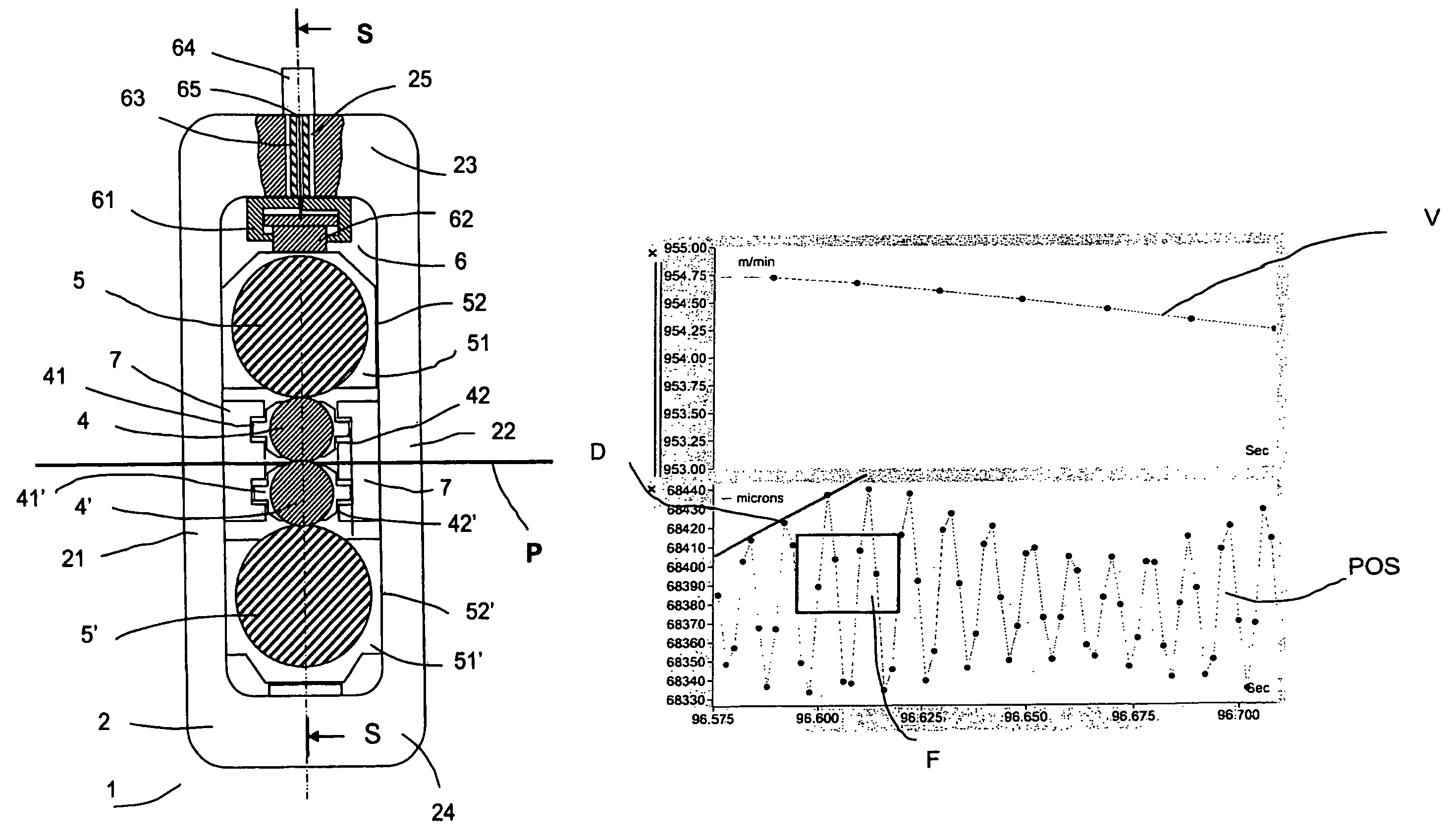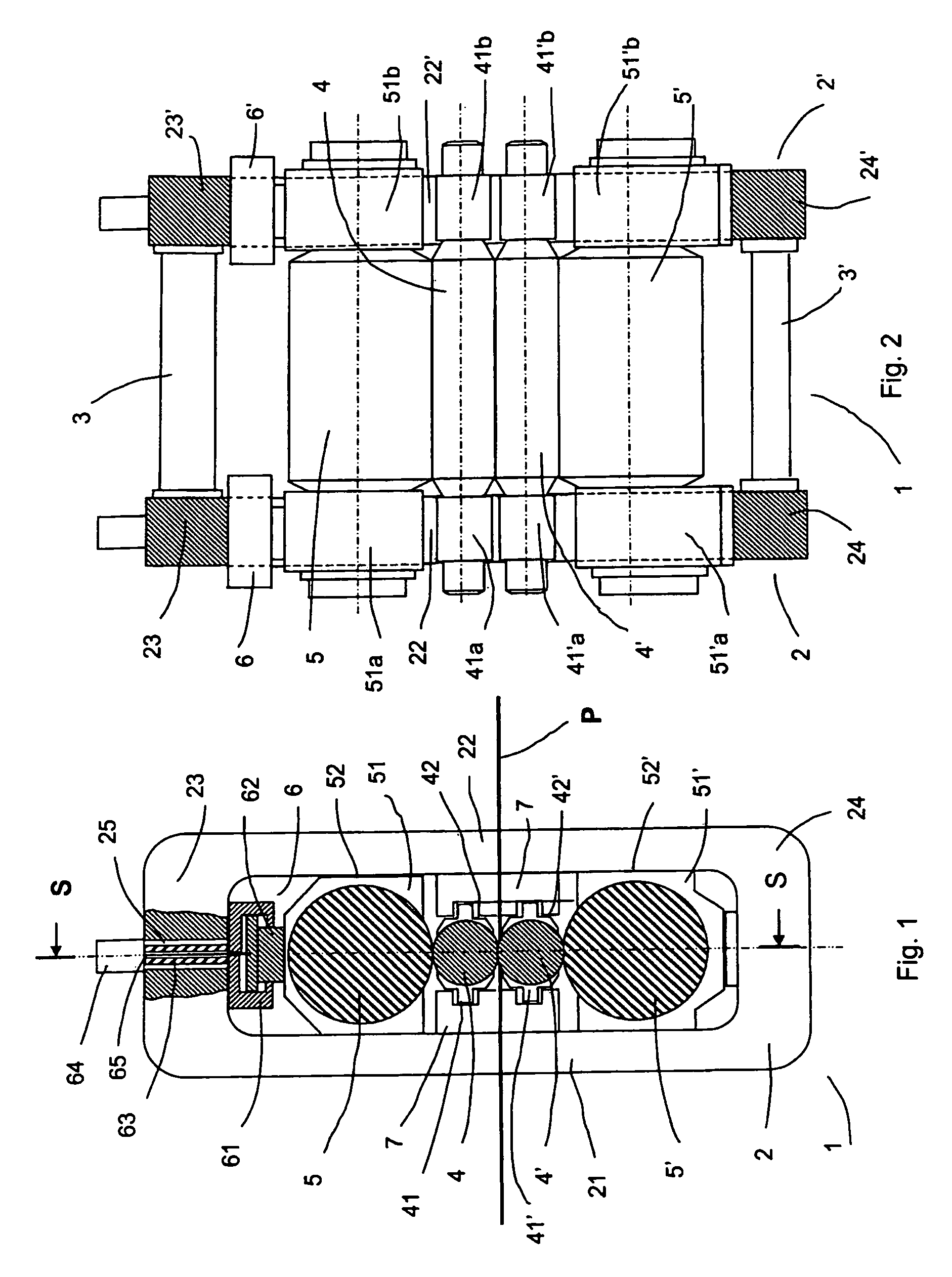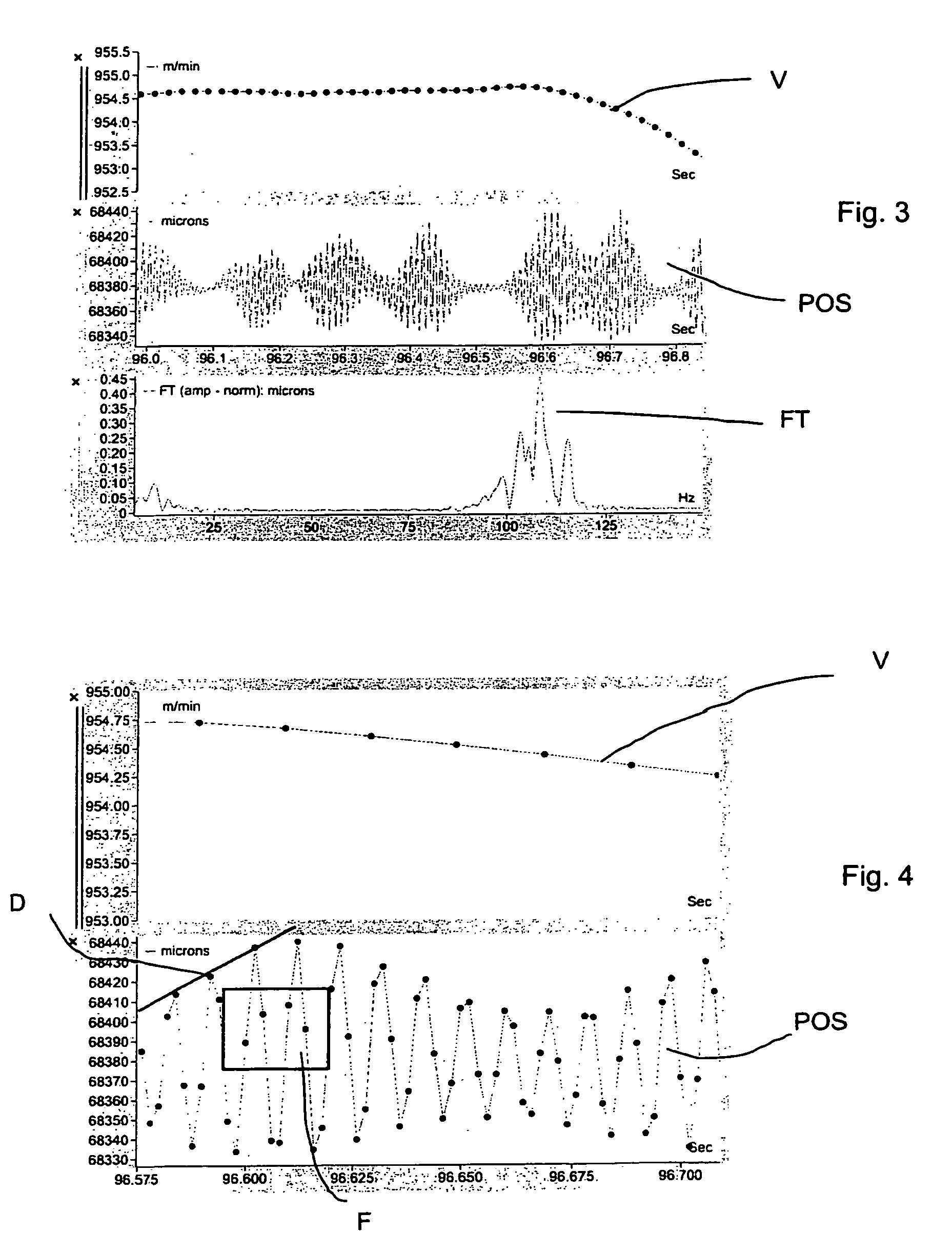Method for detecting the vibrations of a roll stand
a technology of rolling stand and vibration, which is applied in the direction of manufacturing tools, measuring devices, and shaping safety devices, etc., can solve the problems of mass vibration, irregular thickness of the strip or breakage of the strip, and marks on the roll, etc., to make the effect of disturbing
- Summary
- Abstract
- Description
- Claims
- Application Information
AI Technical Summary
Benefits of technology
Problems solved by technology
Method used
Image
Examples
Embodiment Construction
[0034]As shown in FIGS. 1 and 2, a roll stand 1 of the four-high type, which is known per se by the person skilled in the art, comprises two support columns 2 and 2′, respectively, spaced apart and connected by cross-members 3, 3′, between which is mounted a set of superposed rolls having parallel axes placed substantially in the same adjusting plane S perpendicular to the direction of displacement of the product P.
[0035]Each column 2, 2′ has a shape which is closed to form a ring and each comprises two upright pillars 21, 22 (21′, 22′, respectively) and two horizontal portions 23, 24 (23′, 24′, respectively).
[0036]The set of superposed rolls comprises two working rolls, 4, 4′ between which the product P passes, and two backing rolls 5, 5′ on which the working rolls rest.
[0037]It should be noted in passing that there are types of roll stand, other than four-high stands, which comprise more rolls, for example six-high stands, or fewer rolls, for example two-high stands. The invention...
PUM
| Property | Measurement | Unit |
|---|---|---|
| height | aaaaa | aaaaa |
| frequencies | aaaaa | aaaaa |
| frequencies | aaaaa | aaaaa |
Abstract
Description
Claims
Application Information
 Login to View More
Login to View More - R&D
- Intellectual Property
- Life Sciences
- Materials
- Tech Scout
- Unparalleled Data Quality
- Higher Quality Content
- 60% Fewer Hallucinations
Browse by: Latest US Patents, China's latest patents, Technical Efficacy Thesaurus, Application Domain, Technology Topic, Popular Technical Reports.
© 2025 PatSnap. All rights reserved.Legal|Privacy policy|Modern Slavery Act Transparency Statement|Sitemap|About US| Contact US: help@patsnap.com



